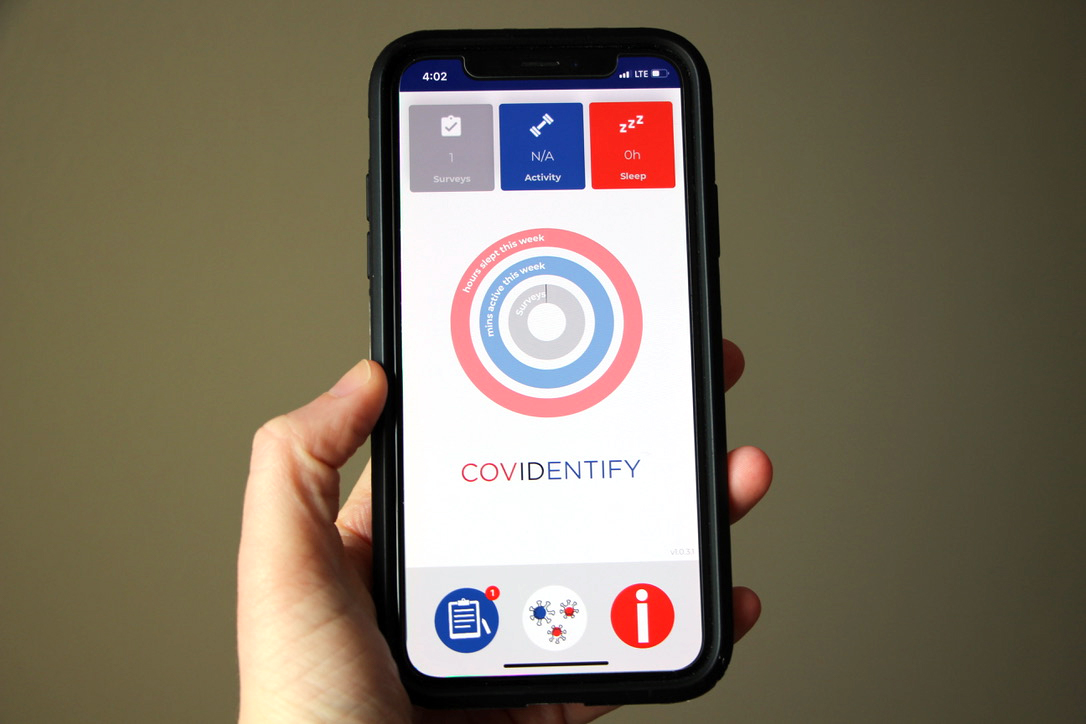‘Covidentify’ Adapts to Address a Changing Pandemic
Smart watch study expands by providing devices in underserved areas

Researchers at Duke University are expanding a recent study intended to help identify the symptoms of COVID-19, the disease caused by the novel coronavirus. This expanded effort will help the team establish a more comprehensive method of early-symptom detection and provide more information about how the virus can spread through a community.
Originally launched on April 2, 2020, CovIdentify was designed to explore how data collected by smartphones, Apple Watches and other smartwatches could help determine whether or not device users have COVID-19. The project, led by assistant professor of biomedical engineering Jessilyn Dunn, Ryan Shaw, an associate professor of nursing and director of the Health Innovation Lab, and other collaborators in Duke Health and MEDx (Medicine + Engineering at Duke), explores how biometric information, like sleep schedules, oxygen levels, activity levels and heart rate, can help indicate early symptoms of COVID-19.
In the expanded phase of their study, the team will launch an iOS application and send devices to target populations and underserved communities that are at the highest risk of contracting the coronavirus. They have also established formal partnerships with Garmin and Fitbit, to expand the kinds of devices available for the study.
“Our team recognized that COVID-19 was going to be a long-term health care problem, and we knew that wearable devices and smartphones would be a good way to develop digital biomarkers that could determine a COVID-19 infection,” said Shaw. “One of our goals is to expand our data collection capabilities, which will increase our ability to differentiate the COVID-19 infection from other illnesses. This differentiation is going to be key, as we expect to see waves of resurgence pop up as the country opens back up, and some of these flare-ups may coincide with flu season.”
Dunn and her team have noted that the coronavirus has had a disproportionate effect on underserved communities, minorities and people with chronic illnesses like diabetes and hypertension. Working with collaborators Chris Woods, MD, the associate director of the Duke Center for Applied Genomics and Precision Medicine, and Geoffrey Ginsburg, the director of MEDx, the team plans to target and collect more comprehensive biometric data from these communities.
“We’re seeing that underrepresented minorities are at a much greater risk of both contracting COVID-19 and developing a more severe illness, so it’s important that we explore what biometric factors may contribute to that risk,” said Shaw.
In the first phase of CovIdentfy, the team launched the covidentify.org website, which allows participants to input their relevant demographics and medical information. Delivered via text or email, the daily survey asks participants about people they’ve been in contact with and about specific symptoms if they feel sick. Participants are also asked to share biometric data from their smartphones and smartwatches. The team then matches the biometric data with answers from the survey questions to use the relationship between reported symptoms and any changes in the biometric data to develop biomarkers.
“The iOS app will ideally simplify the sign up and survey process, and it expands the tools we can work with,” said Dunn. “The CovIdentify app will be able to pull data from any device that syncs with the Apple Healthkit application, which is a standard app on all iPhones.”
To ensure that they’re also pulling data from a variety of sources and communities, the team developed a plan to target recruitment of people that have a higher risk of contracting the disease, including delivery drivers, grocery store workers, hospital cleaning and cafeteria staff and nurse aids. They are also exploring how they can deploy watches in high-density housing like nursing homes, college dorms, military barracks and homeless shelters.
Study sponsors are supplying devices to people in these key populations who would not otherwise be able to afford a wearable device. The team is also ramping up their targeting efforts in locations outside of the United States where viral hotspots have been identified.
“We’ve put together targeted social media advertising for the study, which is deployed in cities around the globe that report an increase in positive cases,” said Dunn. “This is a global pandemic, so it’s important that we can we can work with data collected from around the world to begin developing comprehensive diagnostic solutions and manage outbreaks.”
Initially, CovIdentify was projected to run through the end of 2020, which would allow the team to collect 12 months of historical data from the wearable devices and six months of data going forward. With expanded support from Duke, the project will now run through 2021.
“If CovIdentify is successful, it will be a non-invasive and accessible tool that can help us control the spread of the coronavirus,” said Dunn. “This expanded support brings this goal closer to becoming a reality, and we’re grateful for the support from Duke and from our partners in industry.”
If you’re interested in participating in the program, you can sign up at covidentify.org.
